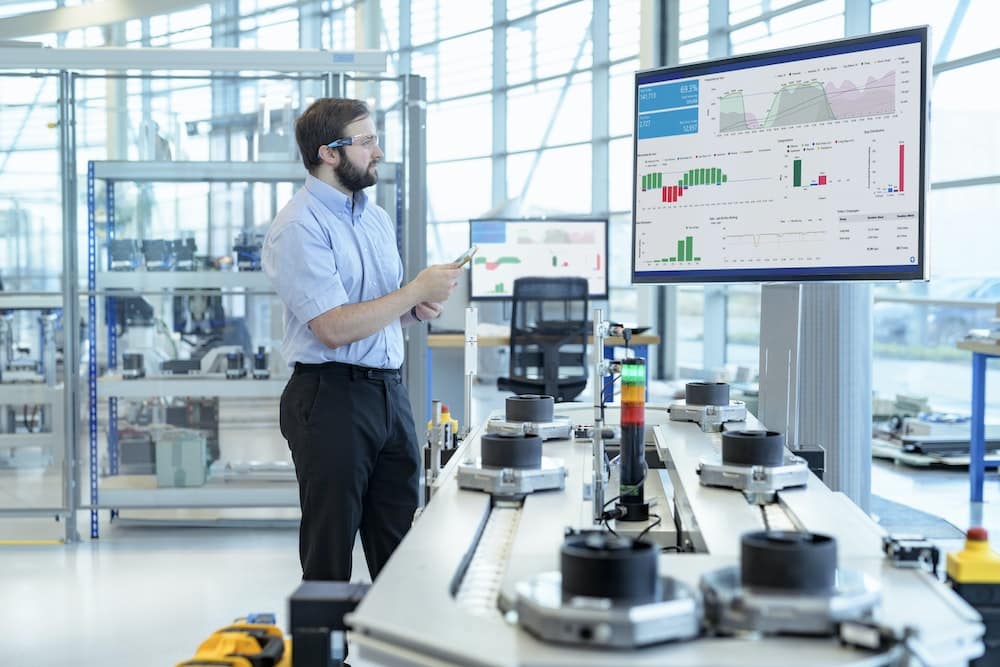What’s the Role of Robotics in the Future of Personalized Retail Experiences?

The retail landscape is undergoing a radical transformation. In the heart of this revolution, you will find the increasing influence of robotics and automation. From the back room to the sales floor, robots are taking on a new role in shaping customers’ experiences. This article delves into the key areas where we are witnessing the integration of robotics in retail and the impact it is having on customer experiences and service delivery.
Robotics in Customer Service
Understanding customers and delivering personalized experiences has become a cornerstone in the competitive world of retail. Today, the integration of robotics is not only enhancing customer service but also revolutionizing it.
A lire aussi : How Can Technology Enable Precision Viticulture for Enhanced Wine Quality?
Robotics is redefining customer service in retail. Robots are increasingly being deployed to the frontlines, handling customer interactions and providing real-time solutions. For instance, ‘service-bots’ can offer product recommendations based on customer preferences, handle returns, and resolve customer complaints. In the process, they save employees’ time, allowing them to focus on other tasks that add more value to the customer experience.
These robots can also offer a consistent and error-free service. Unlike their human counterparts, they don’t get tired or have bad days. This leads to more consistent and reliable service, which is a crucial aspect of improving customer satisfaction.
A lire en complément : Towards more emotional and empathetic chatbots?
The application of robotics in customer service goes beyond the store environment. Online retailers are also embracing this technology. Automated chatbots provide 24/7 customer service, responding instantly to customer inquiries and delivering personalized shopping experiences.
The Role of Robots in Inventory Management
Inventory management is another area where robots are showing their worth. The task of tracking and managing inventory is crucial in retail. However, it is also time-consuming and prone to human error.
Robots are changing the game here. They can quickly scan and restock shelves, monitor inventory levels, and even predict future inventory needs based on past patterns. This results in a more efficient inventory management system, reducing the instances of overstocking or understocking.
Moreover, robots can work round-the-clock without the need for breaks. This means inventory management can continue after store hours, ensuring shelves are well-stocked for the next business day. It also frees up staff time, allowing them to focus more on customer-facing roles.
Streamlining the Shopping Experience with Robotic Automation
From the moment customers step into a store, robotics can play a significant role in shaping their shopping experience. Robots equipped with AI technologies can greet customers, guide them through the store, and provide them with detailed product information.
In addition, robots can personalize the shopping experience in ways humans can’t. For instance, they can remember customer preferences from previous visits and make tailored product suggestions. This level of personalization can significantly enhance the shopping experience, making customers feel valued and understood.
Aside from personalizing the shopping experience, robots can also streamline it. For instance, self-checkout systems and automated payment kiosks reduce the time customers spend waiting in lines. This not only saves customers’ time but also improves their overall shopping experience.
Leveraging Robotics in Retail Marketing
Marketing is an integral part of retail, and robotics is becoming a key player in this area too. Robots equipped with AI capabilities can analyze vast amounts of data to understand customer buying habits and preferences.
This in-depth understanding of customers can inform marketing strategies, enabling retailers to deliver personalized marketing messages. For instance, a robot can recommend products based on a customer’s past purchases or browsing history. This level of personalization can drive customer engagement and ultimately boost sales.
Furthermore, robots can deliver these personalized marketing messages at the right time. They can analyze data to identify the best time to reach out to customers, improving the effectiveness of marketing campaigns.
The Human Aspect in a Robotic Future
While the rise of robotics in retail presents numerous benefits, the human aspect in retail should not be overlooked. Robots can enhance the shopping experience, streamline operations, and deliver personalized marketing messages. However, they cannot replicate the human touch.
A human employee can empathize with a customer, understand their emotions, and use this understanding to enhance the service delivery. They can also think on their feet, making rapid decisions in unexpected situations.
Therefore, as you embrace the robotic revolution in retail, it is crucial to find a balance. Robots should augment human employees, not replace them. This will ensure that while you leverage the benefits of robotics, you also maintain the human touch that is so vital in creating memorable retail experiences.
Robotics in Supply Chain Optimization
The retail industry is continually seeking methods to optimize its supply chain, and robotics is playing a pivotal role in this quest. Robotics in the supply chain has the potential to drastically reduce operational costs, improve efficiency, and enhance customer satisfaction.
Robots can automate repetitive tasks such as packing and sorting, significantly speeding up order fulfillment times. With their ability to work tirelessly, they can keep the supply chain running smoothly around the clock. In addition, robots can be programmed to perform these tasks error-free, ensuring accuracy in the supply chain.
Moreover, with advancements in artificial intelligence and machine learning, robots are taking on more complex tasks. They can analyze real-time data from various sources, including inventory, sales, and weather forecasts. This enables them to anticipate supply chain disruptions and make proactive decisions. For example, they can adjust the production schedule in response to a forecasted increase in demand.
Robots are also instrumental in improving traceability in the supply chain. They can track products from the production site to the retail shelf, providing valuable data on the product’s journey. This can enhance customer trust by assuring them of the product’s origin and quality.
In summary, the integration of robotics in the retail supply chain promises improved efficiency, accuracy, and customer satisfaction.
The Future of Robotics in Retail: A Conclusion
The integration of robotics in retail is no longer a futuristic concept; it’s a living reality that is revolutionizing the retail landscape. From enhancing customer experiences to optimizing inventory management and supply chains, robots are rapidly becoming indispensable in the retail industry.
While the benefits of robotics in retail are plentiful, it is essential to remember that robots function best when they augment rather than replace human workers. The unique human ability to empathize, adapt quickly to unexpected situations, and provide personal attention to customers is irreplaceable.
However, the synergy between human employees and robots can lead to the creation of a retail environment that is efficient, customer-centric, and innovative. It can take the shopping experience to a new level of personalization, making customers feel more valued, understood, and satisfied.
Ultimately, the future of retail lies in the strategic fusion of human and robotic capabilities. As the retail industry continues to evolve, it is clear that robotics will continue to play a significant role in shaping the future of personalized retail experiences. The potential of robotics in retail is vast and we are only beginning to scratch the surface of what is possible.
Looking forward, the retail industry will need to continue exploring innovative ways to integrate robotics into their operations. At the same time, ensuring a balance between technological advancements and the human touch will be vital. After all, the ultimate objective of retail is to serve and satisfy the customer. And in achieving this objective, robotics and humans must work hand in hand.
